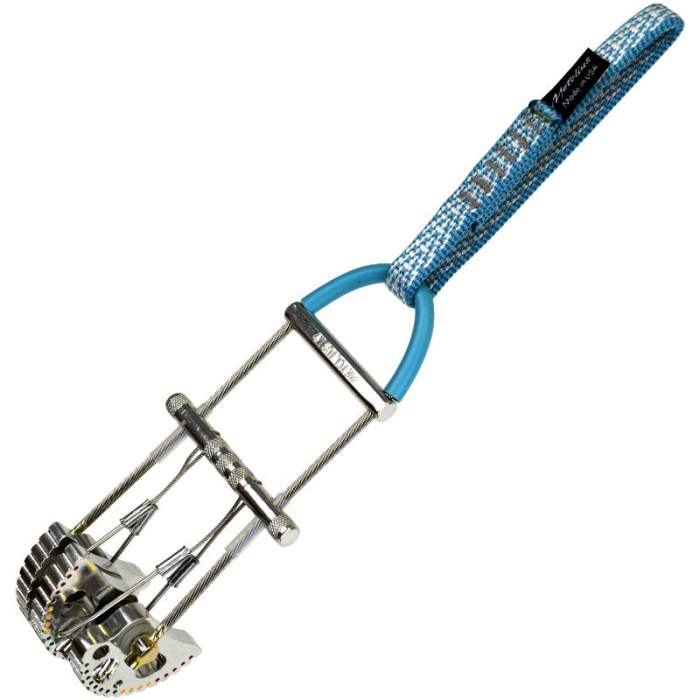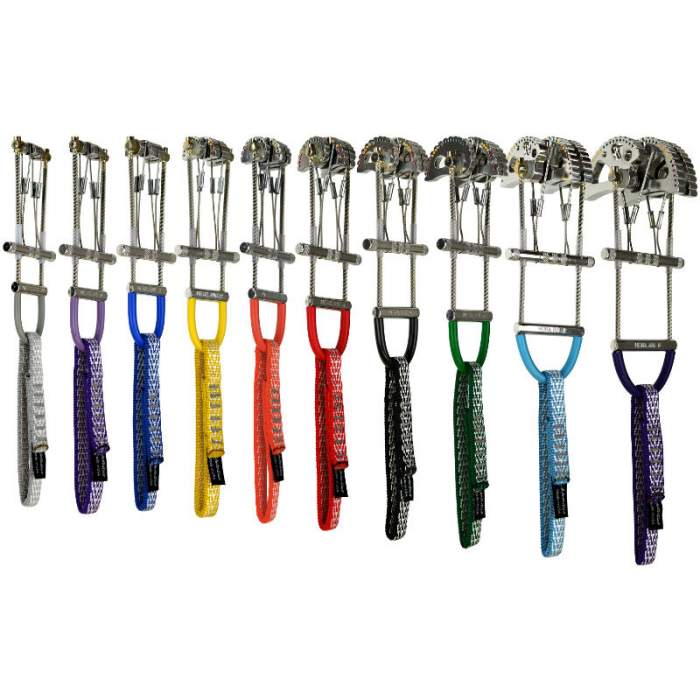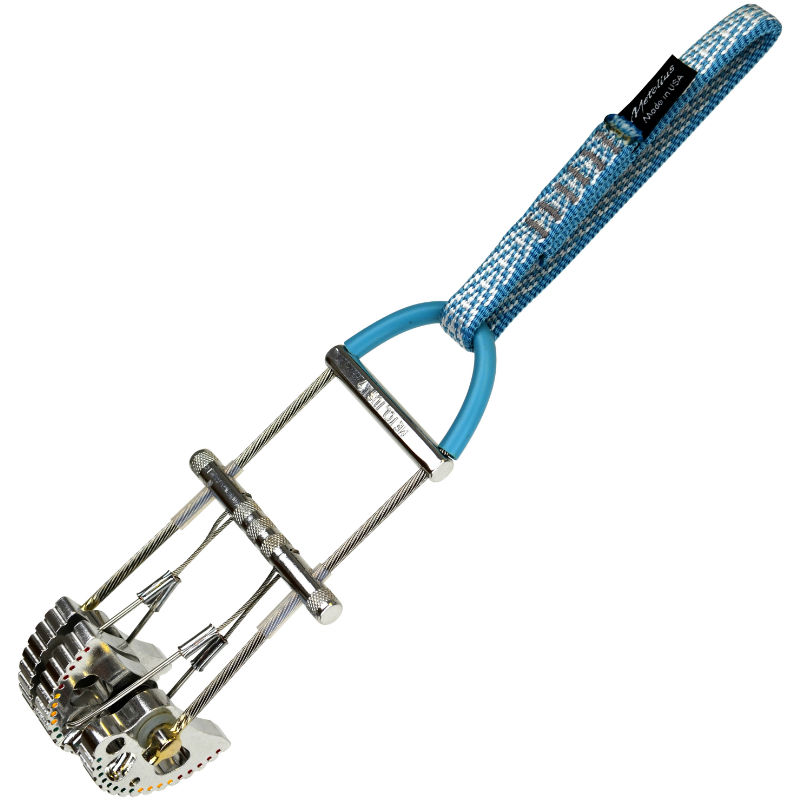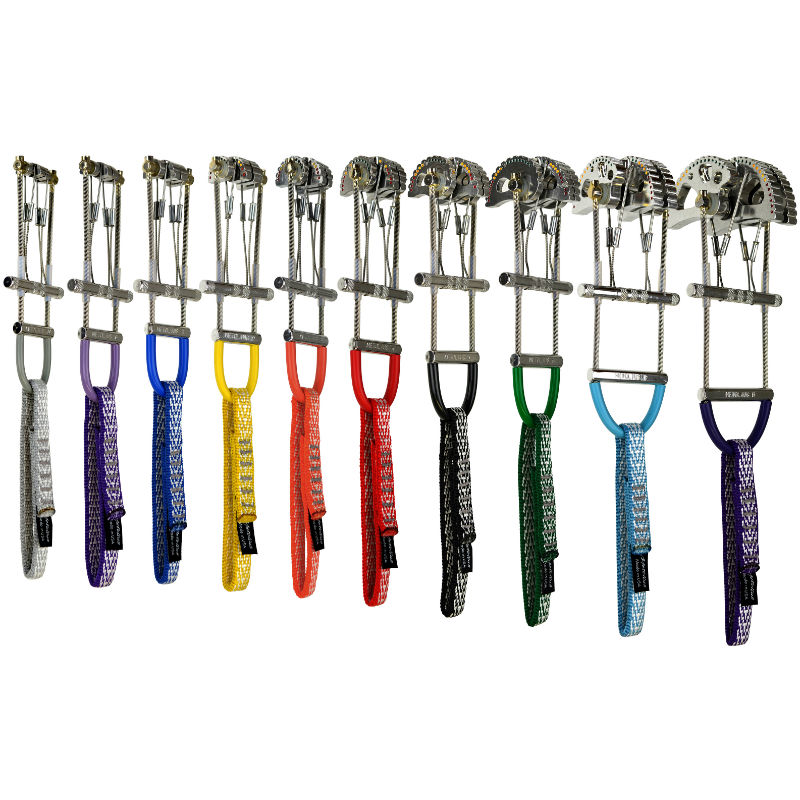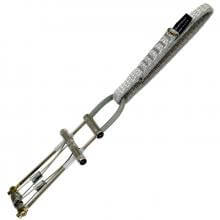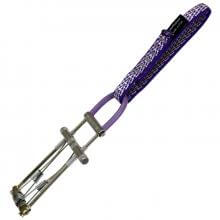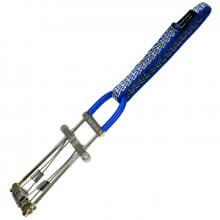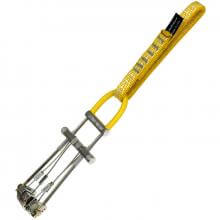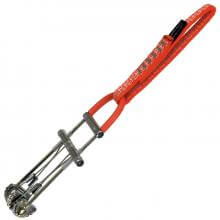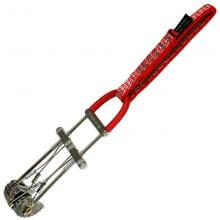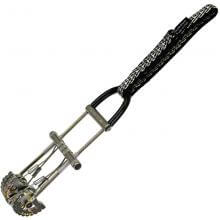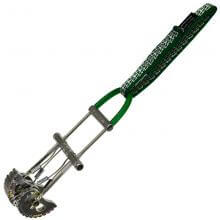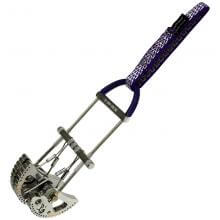How to use Metolius Cam, how cam works, lifespan, care and maintenance with instructional pictures.
Ultralight Power Cam 7
Description
• Direct Axle Technology™ (DAT™) makes Ultralight Power Cams the lightest 4-cam units in the world!
• DAT allows for more placement options in shallow, narrow, or bottoming placements
• DAT makes tricky placements easier due to better cam lobe visibility, especially in the small sizes
• 13 mm (0.51") Monster Sling webbing (36% Dyneema/64% nylon)
• Range Finder tells you at a glance if you've chosen the right size cam for the placement
• Optimized cam angle for more outward force
• Wider cam faces for more grip
• U-shaped body for greater durability and unparalleled control during placement and retraction
• Machined cam stops
• Color-coded sewn slings and tubing
• CNC machined for much greater precision than stamped or extruded cams
• 7075-T6 aluminum (sizes #00-#6) 6061-T6 aluminum (sizes #7 #8)
• CE/UIAA certified
• Hand built, inspected and individually proof tested in Bend, Oregon
Retail price
When you click a link below and then checkout online, no matter what you buy (climbing gear or not), we get a small commission that helps us keep this site up-to-date. Thanks!

Weight (g / oz)  Weight (g / oz)In grams and ounces, the weight, as stated by the manufacturer/brand. | 127.0 g / 4.50 oz |
| Cam Head | 4 lobes, single axle |
| Offset | No offset |
| Stem | Flexible double stem |
| Sling | 11 cm x13 mm Nylon / Polyamide (single sling loop) |
| Camming Angle | 13.25° (angle is consistent throughout) |
| Active Strength | 10 kN |
Cam Range (mm / in)  Cam Range (mm / in)In millimeters and inches, the maximum dimensions of the cam lobes when shut tight and fully extended. Since the "usable" range is so debatable, all manufacturers now list the full dimensions to avoid selling themselves short. For offset cams, we'll list the max dimensions possible and then afterwards list each of lobe dimensions. | 40.0 - 57.5 mm (1.57 - 2.26 in) |
| Materials | Main Material: 6061-T6 aluminum |
| Certification | CE, UIAA |
No reviews yet.
Metolius Ultralight Powercams are the lightest cams on the market. The light and compact design makes them ideal for back country adventures, or any application where traveling light is key. The cam lobes are nice and wide making them a decent option for softer rock types. The u-stems are flexible enough for horizontal placements, while also providing a high clip-in point for aid climbing and the cam head is compact enough to fit into some awkward and tight placements.
Summary: Metolius TCUs were some of the first ultra-small cams available to climbers in the mid-1980s and they continue to be a thin-crack staple. On average, Metolius uses a slightly smaller cam angle than other manufacturers, so during a fall the cam lobes push harder against the rock. The compromise with this design is a small loss of camming range. The cams are made with a highly durable aluminum, and the faces are quite wide for added grip.
A narrow head width on the micro sizes allows the TCUs and Power Cams to fit tiny pods and pin scars -- we loved the smallest sizes: #00, #0, and #1. All sizes feature cam stops. The drawback of the Metolius cams is a narrow head width in the largest sizes that compromises their stability.
Also available from Metolius are Fat Cams. These sport extra thick cam lobes for greater grip -- particularly useful in soft rock like the sandstone of Utah's Canyonlands.
Pros: Excellent micro and small sizes; textured trigger bars; cam stops.
Cons: No independent cam manipulation; large sizes can be unstable.
But what really called my attention to just how dependable these pieces are is how well the cams gripped to the wall when loaded or when bearing an outward force. They were literally welded to the rock, and, as an added bonus, were easier to remove than most other small cams I have used before. The Power Cams are a super dependable piece of hardware, and from now on they'll be a must-have on my rack.
Pros: Excellent for all types of rock; lightweight; great range; cheaper than comparable units.
Cons: I really did not see any problems with the Power Cam. They performed so well that after testing a couple, I felt like updating my entire rack!
Beth Rodden shows you how to inspect and maintain your cams.
The UIAA equipment standard provides a baseline for equipment performance in a test lab under controlled conditions on new equipment. Although these test conditions are relevant to the conditions encountered climbing, conditions encountered at the crags and the condition of the equipment are equally important. This recommendation from the UIAA member federation The British Mountaineering Council (BMC) provides vital equipment information that is NOT explicitly addressed in the standard, particularly failure modes of the equipment and recommendations for the use, inspection, maintenance, and retirement of equipment.
A pictoral representation of the UIAA-125 and EN-12276 standards for frictional anchors (which includes SLCD's [cams] and Ballnuts).

